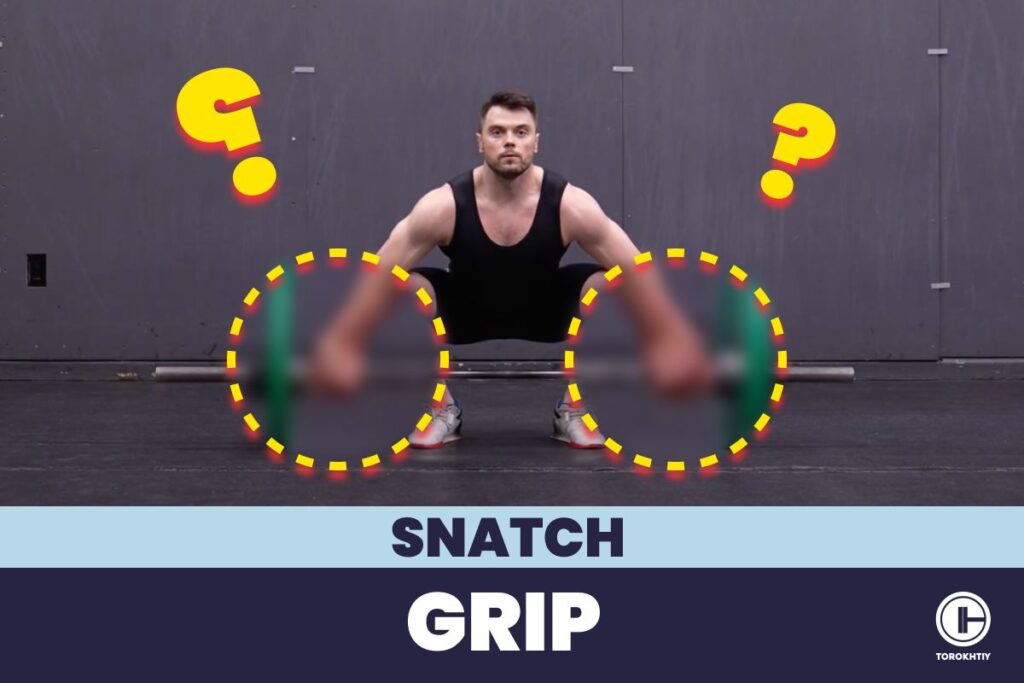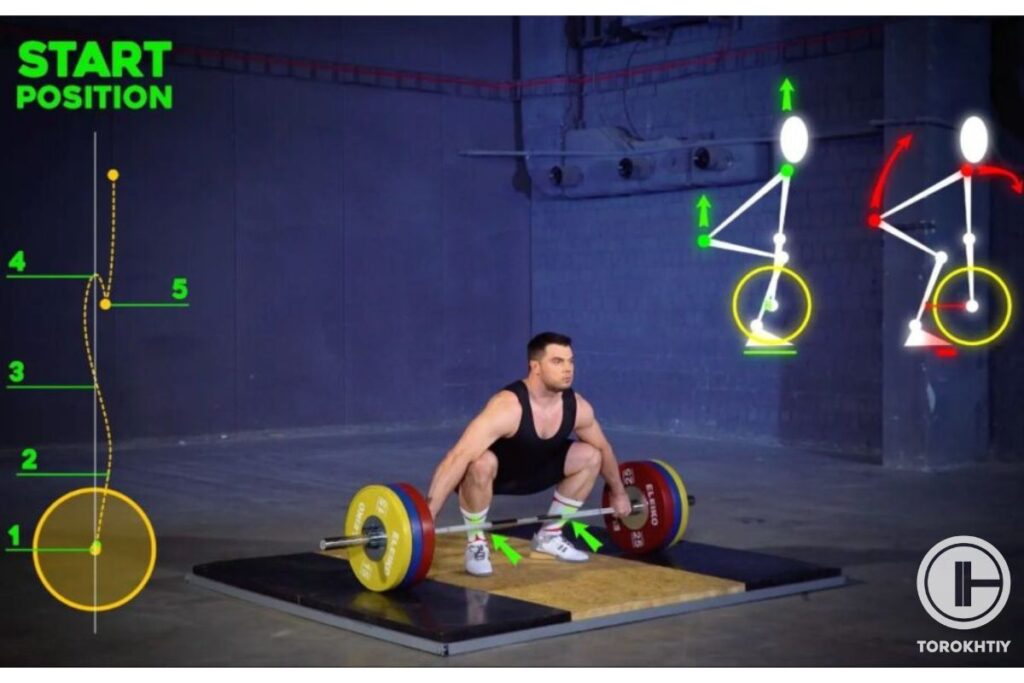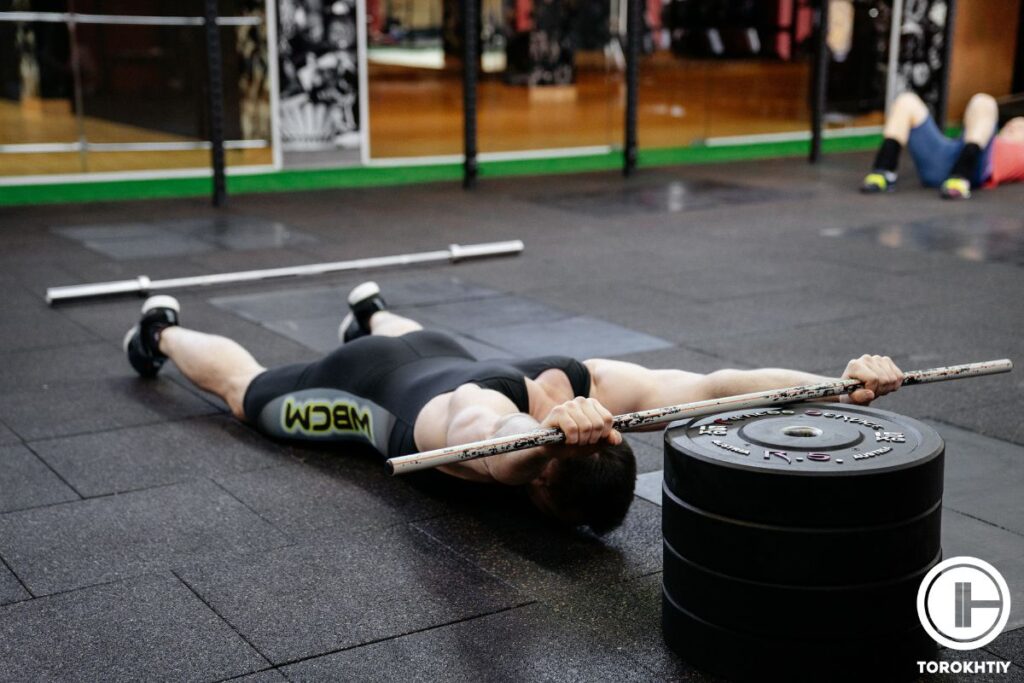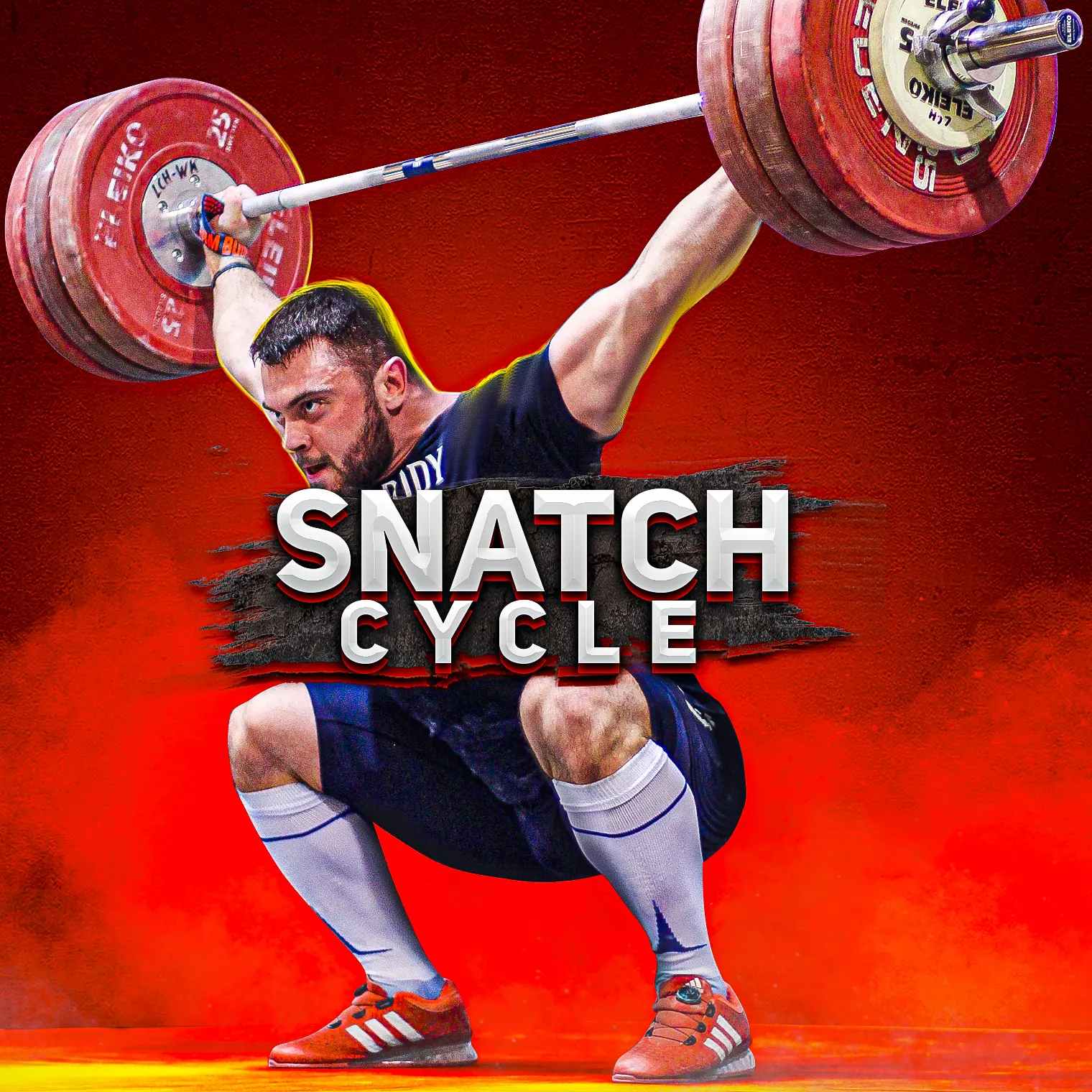Finding Your Optimal Snatch Grip Width: A Complete Guide
Author:
Reviewed by:
(21 years of Oly Lifting experience)
Unlock your full potential by engaging with our experts and community! Have questions about your fitness journey or looking for expert advice on weightlifting techniques? Don’t hesitate — leave a comment below and Jacek Szymanowski will provide a personalized answer and insights to help you reach your goals.
Torokhtiy is reader-supported. Some links are affiliate links, and we may earn a commission at no extra cost to you. See our disclosure page for details.
Having a strong grip is important – it’s been linked to better overall health, it correlates with body strength in general, it makes your life easier, and it’s even been associated with better cognitive function, so we’re always working on getting it stronger. But what about the width of your grip in your snatch?
You might mistake the snatch grip width as a tiny, almost insignificant detail, but that’s a mistake you don’t want to make. This is actually a big deal and it can be the difference between a smooth, powerful lift, and one that feels awkward and might even lead to injury.
In this guide, we’ll break down everything you need to know about snatch grip width and help you find the perfect fit for your body and lifting style.
We’ll discuss how to measure and adjust your grip width, improve overall strength, and even reduce the risk of injury. Regardless of your level of expertise (although this is probably a topic beginners will be the most interested in), optimizing your snatch grip will take your performance to the next level.
You may like it:
- Detailed Olympic Weightlifting Program For Beginners
- 12-Week Weightlifting Program For Women (Detailed Example)
- Create Your Olympic Weightlifting Program (Examples Included)

This article also available as audio. Check this out!
Subscribe and listen it anywhere:
Importance of Proper Grip Width
There are a few reasons why the proper grip width is so important. First, it will allow you to lock the barbell above your head without struggle. When your grip width is correct, you can easily get a stable, strong overhead position, and without that, you can’t successfully complete your lift.
The stability is what makes it possible for you to hold the bar steady and it reduces the chances of slipping or causing strain on your shoulders and arms.
Second, the right grip width helps you transfer energy from your hips to the barbell more effectively and efficiently. With the correct grip, the bar makes contact with your body at the right point and allows you to use the power generated by your hips and legs to lift the barbell.

This efficient transfer of energy means you can lift heavier weights with more control and less effort, so your overall performance benefits. If your grip is too wide or too narrow, you’ll disrupt this energy transfer and make the lift feel awkward.
You’ll also put a decent amount of completely unnecessary strain on your body and you can even end up injured because the incorrect grip width will prevent you from getting a solid overhead position. When you find that grip width that works for you, your lifts become powerful, controlled, and safe.
Follow us!

Free!
Get a 2-week Weightlifting Program as a bonus for the subscription to kickstart your training plan!

Free!
Where to Start?
So, how do you know what your correct snatch grip width is? Well, it really comes down to trial and error so be prepared to make tweaks as you go along. But we do have a good starting point to share with you. You’ll need a PVC pipe for this. It’s lightweight and it will help you find the approximate grip width without the added weight of the barbell.
Start by standing with the PVC pipe in front of you. Place one arm parallel to the floor and the other straight up, so your arms form a 90-degree angle. The distance between your hands on the pipe gives you a rough estimate of your snatch grip width.
Keep in mind, though, this is just a starting point, not an exact measurement. Everyone’s body is different and you will probably need to adjust your grip slightly to find the most comfortable and the most effective position.
Once you have this rough estimate, you want to practice with an empty barbell and make small adjustments. Pay attention to how the bar feels and how well you can lock it overhead.
Fine-tuning your grip width will make sure your form is correct, which is important for having safe, effective exercises. This method gives you a good foundation, and from there, you can make all the tweaks you need to perfect your width.
2 Key Points of Correct Grip Width
You already know how important the correct grip width is for safety and performance, so here are some key points to consider when determining your grip width.
1. Right Point of Contact with the Bar – Hip Crease
The bar should make contact with your body at the hip crease. This point of contact makes sure that you can effectively transfer the power from your hips to the bar. When the bar hits the right spot, you can use the full strength of your lower body to propel the bar up, so the lift ends up being more efficient and powerful. You go too low and will hit your pubic bone – painful mistake.
2. Shoulder Mobility and Locking the Bar Overhead
The contact point of the bar has a small range and allows for slight adjustments in grip width.
A lower contact point (meaning, a narrower grip) allows you to pull from a more advantageous position. This means that you can generate more power from the floor, and your overhead position will probably be stronger.
However, this setup needs you to catch the bar in a higher position and demands more shoulder mobility. If your shoulders are flexible enough, this grip can improve the efficiency of your lifts.
A higher contact point (wider grip) requires a lower starting position and needs a strong overhead lockout. This setup can make it easier to catch the bar lower, which might be good if you have excellent overhead stability.
But it might be harder to generate power from the floor, and you need to make sure that your shoulders can handle the wider grip.

You’re probably thinking – wait, what about arm length? That’s a factor that we don’t consider because it’s fixed. You can’t change the length of your arms, so why bother with it? Instead of arm length, you want to adjust your grip width to get the right point of contact and a strong overhead position.
And don’t forget that the point of contact with the bar may shift a little when you’re lifting heavy weights. Always be mindful of it and make sure not to hit the pubic bone because this can cause… shall we say, severe discomfort? That’s an understatement, but you get the jist. Practice with lighter weights to find the best grip width before using heavy ones.
FAQ
How do I know if my snatch grip width is correct?
The PVC pipe method is a good starting point because it will give you an approximate width. Once you have that width, practice with an empty barbell and make tweaks to your grip. Your grip width is correct if you can keep a stable overhead position and effectively transfer power from your hips to the barbell without discomfort or strain.
Can I use the same snatch grip width for different types of lifts?
Not really. The snatch grip width is, as the name suggests, the grip width that’s suitable for snatches. For example, a clean grip is narrower than a snatch grip. Each lift needs a different grip width for the best performance and maximum safety. However yes you can deadlift and overhead press with a snatch grip – which can help you improve certain elements of snatch.
What should I do if I start feeling pain while practicing my snatch grip?
Stop and reassess your technique. Check your grip width and make sure your form isn’t off. Ask your coach, maybe he will help – If the pain doesn’t stop, you might need to see a doctor or a physical therapist to see if there are any underlying issues. With pain in general, you need to address it right away to prevent future injuries.
Conclusion
Finding the right snatch grip width can make or break your lift. It’s not just about the strength – you want to position your hands perfectly on the bar to maximize power and control. With the right width, you’ll lift heavier weights more smoothly and safely, so every lift will be better.
Start with the basics, like a PVC pipe to get a rough idea, and then fine-tune it with an empty barbell. Pay attention to how it feels and don’t be afraid to make adjustments.
Have you found your perfect snatch grip width yet? What adjustments did you have to make to get there? What differences have you noticed in your lifting performance after tweaking your grip width?
Share your experiences and tips in the comments below!
References:
- Health Promotion Board (HPB) “Prevent Injuries with Proper Form During Workouts,” Singapore University Health Center, https://www.nus.edu.sg/uhc/articles/details/prevent-injuries-with-proper-form-during-workouts (accessed July 23rd 2024)
- John Cronin, Trent Lawton, Nigel Harris, Andrew Kilding, Daniel T. McMaster “A Brief Review of Handgrip Strength and Sport Performance,” Journal of Strength and Conditioning Research 31, no. 11 (November 2017): 3187-3217.
- Mayo Clinic Staff, “Weight training: Do’s and don’ts of proper technique,” Mayo Clinic, https://www.mayoclinic.org/healthy-lifestyle/fitness/in-depth/weight-training/art-20045842 (accessed July 23rd, 2024)
- Richard W. Bohannon “Grip Strength: An Indispensable Biomarker For Older Adults,” Clinical Interventions in Aging 14 (2019): 1681–1691.
- Rongtao Jiang, Margaret L. Westwater, Stephanie Noble, Matthew Rosenblatt, Wei Dai, Shile Qi, Jing Sui, Vince D. Calhoun, Dustin Scheinost, “Associations between grip strength, brain structure, and mental health in > 40,000 participants from the UK Biobank,” BMC Medicine volume 20, Article number: 286 (2022).
- Photos by Torokhtiy Media Team.
Why Trust Us?
With over 20 years in Olympic weightlifting, strength training, nutrition coaching, and general fitness our team does its best to provide the audience with ultimate support and meet the needs and requirements of advanced athletes and professional lifters, as well as people who strive to open new opportunities and develop their physical capabilities with us.
By trusting the recommendations of our certified experts in coaching, nutrition, and sports training programming, as well as scientific consultants, and physiotherapists, we provide you with thorough, well-considered, and scientifically proven content. All the information given in the articles concerning workout programming, separate exercises, and athletic performance, in general, is based on verified data.
The product testing process is described in more detail here.
Author: Jacek Szymanowski
Certified Nutritionist,
M.Sc.Eng. Biotechnology
Performance Architect,
Strength and Conditioning Specialist
With over 30 years of fighting experience, specialization in nutrition coaching for athletes, and expertise in metabolic health and dietary strategies, Jacek offers a comprehensive approach to optimizing your performance and well-being. Backed by a Master of Science degree in Biotechnology, Jacek remains at the forefront of scientific advancements, ensuring that his coaching is always evidence-based and up-to-date.
Reviewed by: Oleksiy Torokhtiy
Olympic Weightlifting Champion, PhD in Sport Science
Best Results: Snatch – 200 kg,
C&J – 240 kg
Oleksiy Torokhtiy is a professional athlete boasting 20 years of experience in Olympic weightlifting. With multiple European and World titles under his belt, he has showcased his prowess in two Olympic Games (Beijing 2008 and London 2012). Upon concluding his illustrious career, Oleksiy dedicated himself to coaching. By 2022, he had conducted over 200 weightlifting seminars worldwide. He is the visionary behind an international sportswear and accessories brand known for its motto, “Warm Body Cold Mind.” Additionally, he is an esteemed author and the creator of a series of training programs and eBooks.










Still have questions after reading our article? Unlock your full potential by engaging with our experts and community! Don’t hesitate — leave a comment below and Jacek Szymanowski will provide a personalized answer and insights to help you reach your goals.